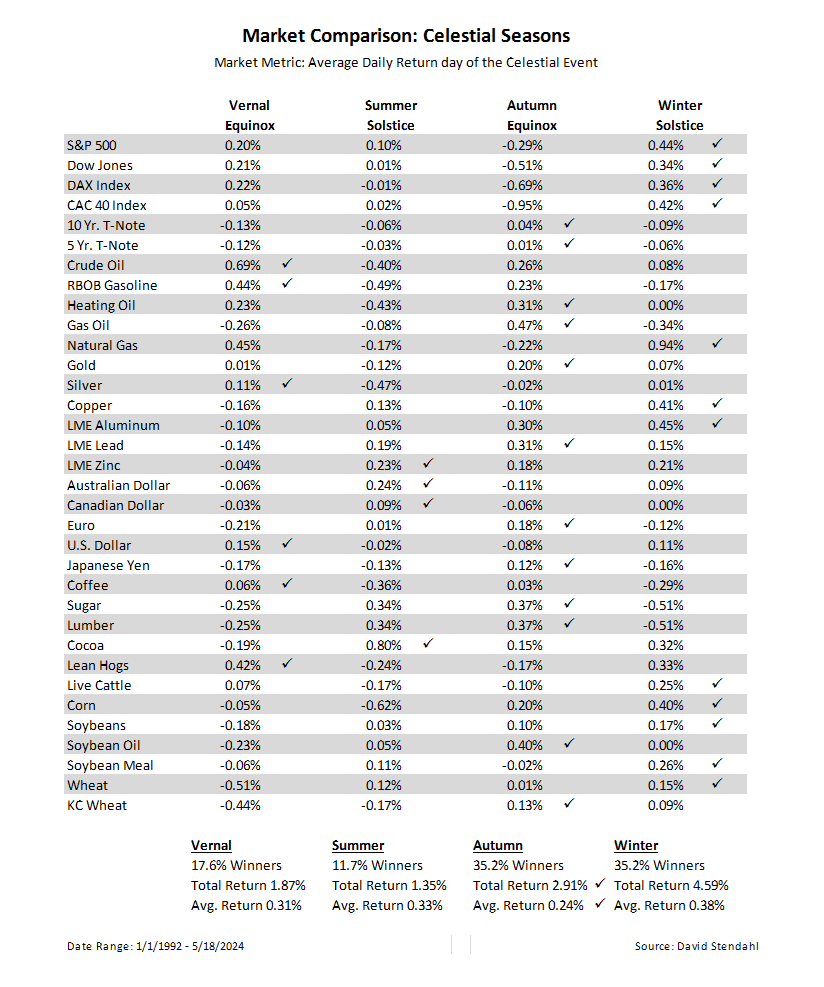Market Comparison Breakdown: Seasonal Phase
As the Earth orbits the Sun we mark the four seasons based on one-day astronomical definitions.
- Vernal or Spring Equinox – late March [Full Details]
- Summer Solstice – late Just [Full Details]
- Autumn or Fall Equinox – late September [Full Details]
- Winter Solstice – late December [Full Details]
Spring and Fall take place when the Sun crosses the celestial equator above the Earth’s equator. It means that day and night are basically equivalent. In the spring the northern hemisphere will experience longer days as we transition toward summer; while in fall we will experience longer nights as we progress toward winter.
Summer and Winter take place when the 23.44% tilt of the Earth’s axis is pointed at or away from the sun. It means that the northern hemisphere experiences the most or least amount of sunlight. The summer solstice marks the point of maximum exposure to the sun as we slowly transition towards fall; while in winter we receive the least amount of sun exposure and we progress towards spring. Each of these astronomical time periods will most certainly have a major effect on seasonal trends
The question is … as the world turns which season, by an astronomical definition, generates the highest return across a diverse basket of markets?

Calendar Breakdown by Events
All trading involves risk. Leveraged trading has large potential rewards, but also large potential risk. You must be aware of the risks and be willing to accept them in order to invest in the futures and options markets. Don’t trade with money you can’t afford to lose. This is neither a solicitation nor an offer to Buy/Sell futures or options. No representation is being made that any account will or is likely to achieve profits or losses similar to those discussed. The past performance of any trading system or methodology is not necessarily indicative of future results.
Our strategies have not been developed based on knowledge of or with reference to your particular circumstances, such as financial position, goals, risk-reward preferences, tax situation, brokerage arrangement, investment or trading experience, and so forth. Hence no content or model published here constitutes a recommendation that any particular security, portfolio of securities, transaction, or investment strategy is suitable for any specific person. You alone are solely responsible for determining whether any investment, security or strategy, or any other product or service, is appropriate or suitable for you based on your investment objectives and personal financial situation. More
